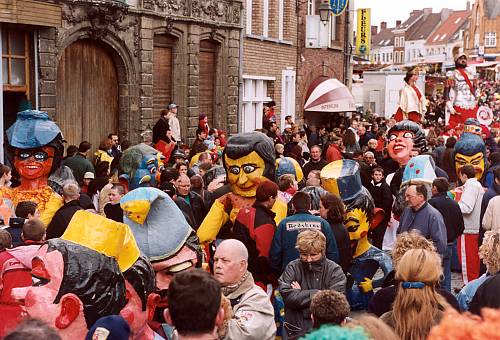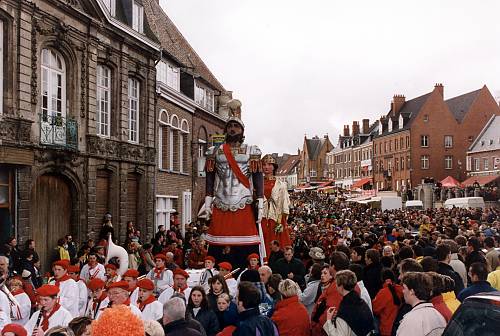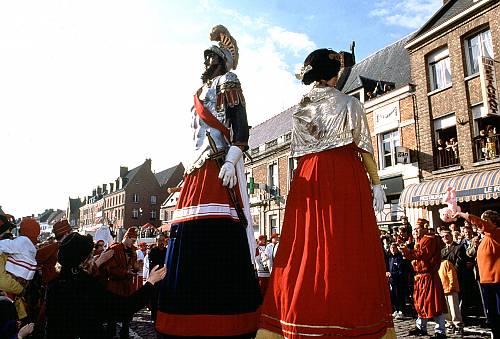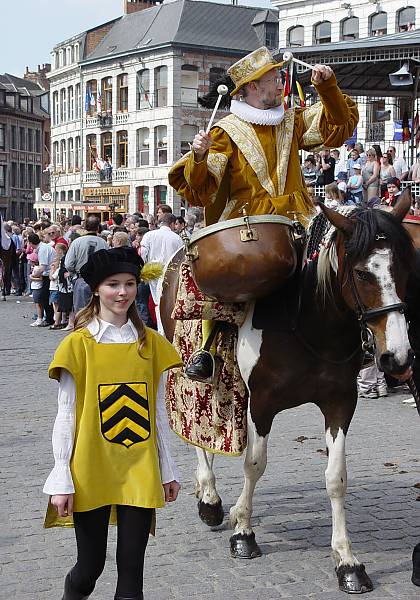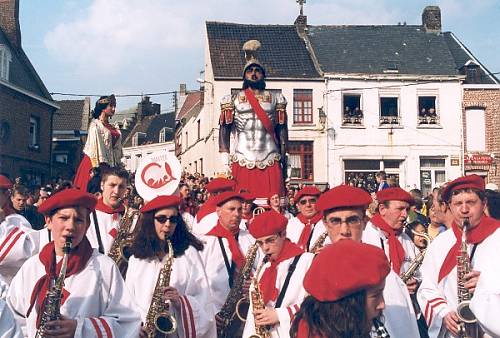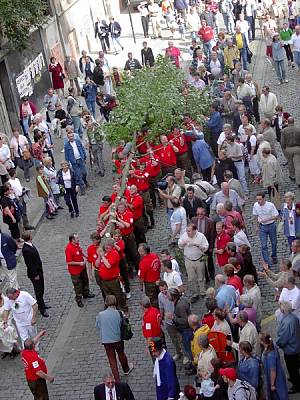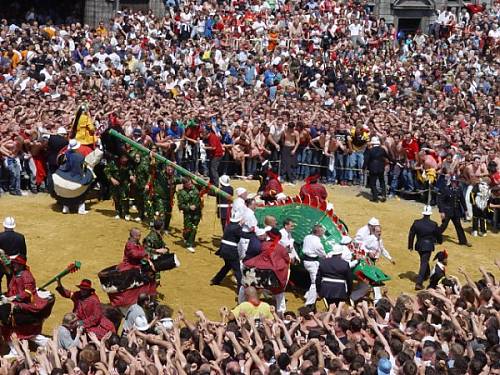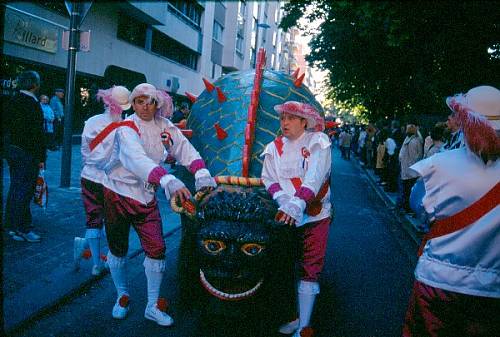Processional giants and dragons in Belgium and France
Inscribed in 2008 (3.COM) on the Representative List of the Intangible Cultural Heritage of Humanity (originally proclaimed in 2005)
On 2 December 2022, the seventeenth session of the Intergovernmental Committee for the Safeguarding of the Intangible Cultural Heritage has decided to remove the ‘Ducasse of Ath’ of the element ‘Processional giants and dragons in Belgium and France’ (Belgium and France) from the Representative List of the Intangible Cultural Heritage of Humanity (Decision 17.COM 8.a).
For further information, see document LHE/22/17.COM/8.a
Traditional processions of huge effigies of giants, animals or dragons encompass an original ensemble of festive popular manifestations and ritual representations. These effigies first appeared in urban religious processions at the end of the fourteenth century in many European towns and continue to serve as emblems of identity for certain Belgian (Brussels, Dendermonde, Mechelen and Mons) and French towns (Cassel, Douai, Pézenas and Tarascon), where they remain living traditions. The giants and dragons are large-scale models measuring up to nine metres in height and weighing as much as 350 kilos. They represent mythical heroes or animals, contemporary local figures, historical, biblical or legendary characters or trades. St. George fighting the dragon is staged in Mons; Bayard, the horse from the Charlemagne legend, parades in Dendermonde; and Reuze Papa and Reuze Maman, popular family characters, parade at Cassel. The performances, often mixing secular procession and religious ceremony, vary from town to town, but always follow a precise ritual in which the giants relate to the history, legend or life of the town.
Giants and dragons enliven popular festivals where they are the main actors at least once a year, as each effigy has its specific feast day. They act out historical scenes and dance in the streets to the accompaniment of fanfares and costumed people. The crowd follows the procession, and many participants help in the preparations at different stages of the festival. The construction of a giant and its ongoing maintenance require months of work and know-how in many techniques given the range of materials used. Although these expressions are not threatened with immediate disappearance, they do suffer from a number of pressures, such as major changes to town centres and increasing tourism, leading to the detriment of the popular, spontaneous nature of the festival.


